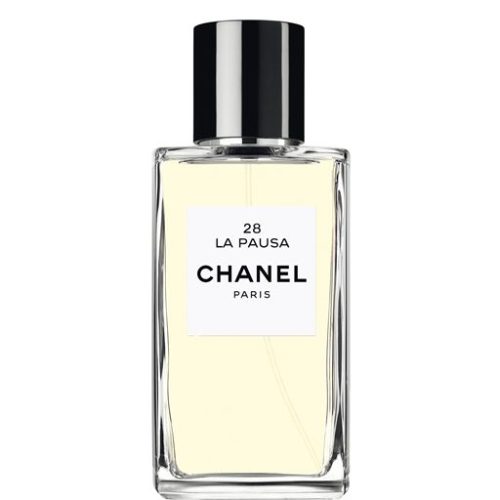
foto: Tavecchi.it
En sus Estudios de la Psicología del Sexo (1897-1827) Havelock Ellis afirma que “…el olor del cuero tiene una influencia sexual curiosamente estimulante en muchos hombres y mujeres. Es un olor que parece ocupar un lugar intermedio entre los olores naturales del cuerpo y los perfumes artificiales para los que en ocasiones sirve de base”. Elegante o agreste, lujoso o rebelde, látigo o cómodo sillón, el cuero despierta algo primitivo en nosotros. Desde Tabac Blond, de Caron, presentado en 1919 (una época en que las mujeres también comenzaban a cortarse el pelo y a fumar en público) a Tuscan Leather, de Tom Ford (2007), del que muchos dicen huele a cocaína (pruébenlo y saquen sus propias conclusiones), rara vez pasa inadvertido. En perfumería, su aroma se reconstruye mediante naturales como el estoraque, abedul y cistus; castóreo natural o sintético y sintéticos como la isobutil quinolina, safraleine o suederol.
Las distintas denominaciones tradicionales aluden a los tratamientos que recibían los pellejos. El cuero de España difiere del ruso, el inglés y el marroquí en el procedimiento que se seguía para curtir los cueros. En los viejos tiempos Córdoba se volvió tan famosa por sus cueros polícromos repujados que el cordobán -obtenido a partir de la piel de las cabras- debe su nombre a la ciudad. En el caso del cuero de España, los pellejos se sumergían en una mezcla de aceites fragantes, la mayoría de ellos florales, que prestaban un olor característico. Según Havelock Ellis “consiste en gamuza sumergida en aceites de neroli, rosa, sándalo, lavanda, verbena, bergamota, clavo de olor, y canela, untado a continuación con civet y almizcle” y afirma que los perfumes de Peau d’Espagne son “a menudo el aroma favorito de las personas sensuales”. En el siglo XIX, el cuero de España se utilizaba también para perfumar papel de escribir.
El cuero de Rusia (que, según The manufacture of leather: being a description of all of the processes for the tanning, tawing, currying, finishing de Charles Thomas Davis, 1885, fue en realidad inventado por los antiguos Búlgaros) era originariamente de caballo o cabra difiere de otros cueros en la manera en que ha sido tratado. Su rasgo más saliente es una característica nota penetrante de alquitrán de abedul. Los soldados rusos usaban aceite o alquitrán de abedul para impermeabilizar sus botas. Las joyas valiosas solían guardarse envueltas en una pieza de cuir de Russie; éste también era un material valioso para la encuadernación de libros debido a su resistencia a la humedad y su efecto repelente de insectos.
El cuero de Marruecos (tradicionalmente de cabra) empleaba sumac en su proceso de curtido. Tenía aspecto brilloso y textura elástica y suave. Era teñido en colores intensos y su uso estaba extendido en encuadernación de lujo.
Debajo, algunos de los favoritos que reseñamos en los últimos años. Pueden leer las reseñas haciendo click en el texto resaltado.
Clásicos:
Chanel Cuir de Russie
Balmain Jolie Madame
Dior Diorling
Parfums Grès Cabochard
Santa Maria Novella Peau d’Espagne
Modernos:
Caro

Leather in Perfumery: wild and tame
In his Studies of the Psychology of Sex (1897-1827) Havelock Ellis states that “…the smell of leather has a curiously stimulating sexual influence on many men and women. It is an odor which seems to occupy an intermediate place between the natural body odors and the artificial perfumes for which it sometimes serves as a basis”. Elegant or rugged, luxurious or rebellious, whip or comfortable armchair, leather awakens something primal in us. From Caron‘s Tabac Blond, launched in 1919 (a time when women also started cutting their hair short and smoking in public) to Tom Ford‘s Tuscan Leather (2007) said by more than a few to smell like cocaine (try it for yourself and draw your own conclusions), it rarely goes unnoticed. In perfumery, its smell is reconstructed via naturals such as styrax, birch and labdanum; natural or synthetic castoreum and synthetics like isobutyl quinoline, safraleine or suederol.
The different traditional denominations allude to the treatment the leather underwent. Spanish leather differs from Russian, English and Morocco leathers in the way the animal skins were tanned. In olden times, Córdoba became so famous for its embossed polichrome leathers that the cordován variety -obtained from goat skins- owes its name to the city. In the case of Spanish leather, the animal hides were immersed in a mix of fragrant oils, most of them floral, that would lend a characteristic smell. According to Havelock Ellis “it consists of wash-leather steeped in ottos of neroli, rose, santal, lavender, verbena, bergamot, cloves, and cinnamon, subsequently smeared with civet and musk” and states Peau d’Espagne perfumes are “often the favorite scent of sensuous persons”. In the XIXth century, Spanish leather was also used for scenting writing paper.
Russian leather (which, according to The manufacture of leather: being a description of all of the processes for the tanning, tawing, currying, finishing by Charles Thomas Davis, 1885, was actually invented by ancient Bulgarians) was originally horse or goat and differs from other leathers in the way it has been treated. Its main trait is a characteristic penetrating birch tar note. Russian soldiers used birch tar or oil to weatherproof their boots. Valuable jewels were kept wrapped in a piece of cuir de Russie, which was also a preferred material for book binding due to its resistence to humidity and insect repellent properties.
Moroccan leather (traditionally goat) employed sumac in its tanning process. It had a glossy appearance and a soft and elastic texture. It was dyed in bright colors and used extensively in luxury bookbinding.
Below, some favorites we have reviewed over the years. You can read the reviews by clicking the highlighted text.
Classics:
Chanel Cuir de Russie
Balmain Jolie Madame
Dior Diorling
Parfums Grès Cabochard
Santa Maria Novella Peau d’Espagne
Modern:
Caro





























































